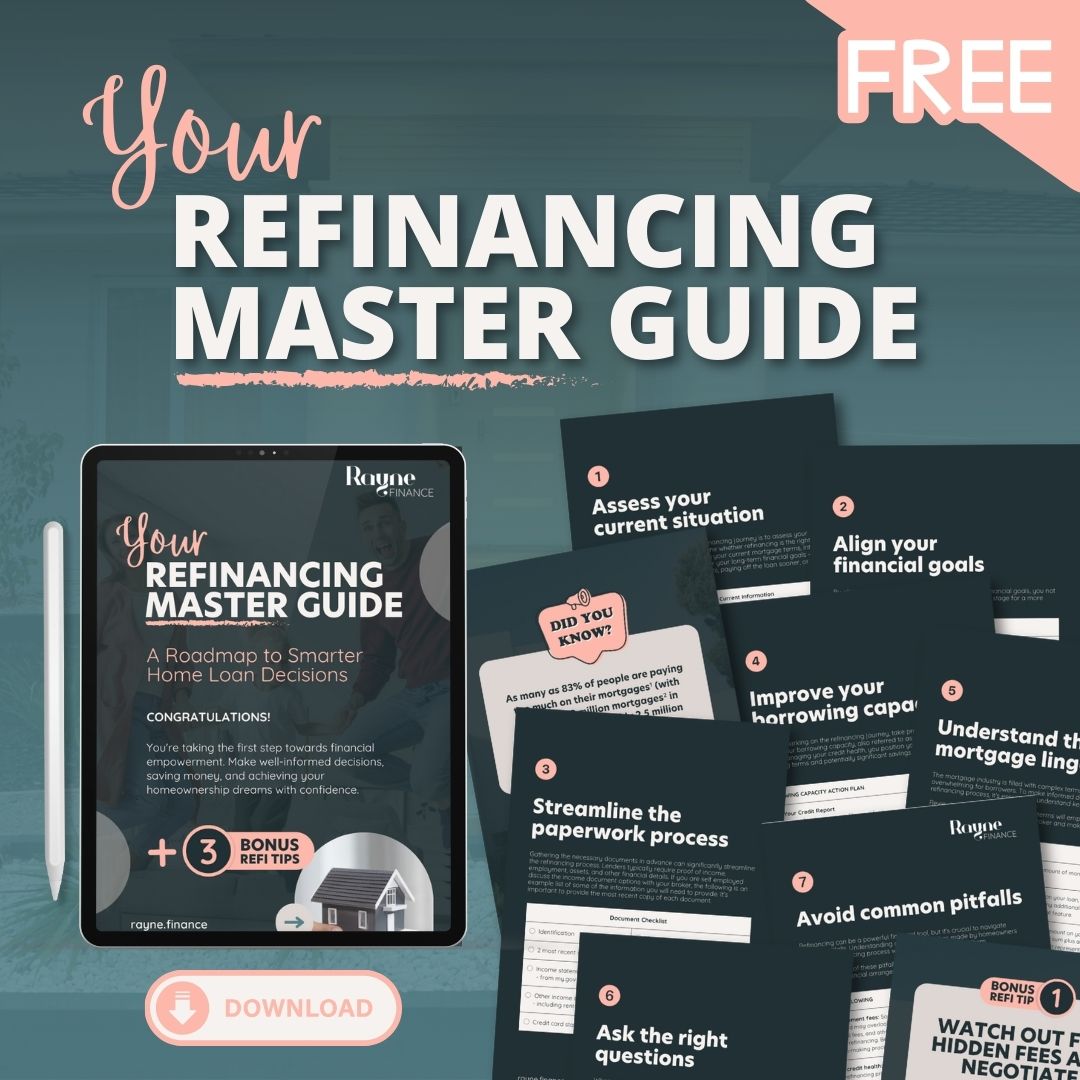If you’ve owned your home for several years, there’s a good chance you’ve accumulated some equity.
Equity is the difference between the value of your home and your outstanding mortgage, and can be expressed as a number or percentage.
For example, if you originally bought a $1 million home with a $200,000 deposit and $800,000 loan, your starting equity would’ve been $200,000 / 20% (while the lender’s would’ve been $800,000 / 80%).
If your home had since increased in value to $1.2 million and you’d reduced your loan to $744,000, your equity would’ve increased to $456,000 / 38%. (That’s because the difference between $1.2 million and $744,000 is $456,000, and $456,000 is 38% of $1.2 million.)
Total equity vs useable equity
The reason equity matters is because you can potentially borrow against that equity and use those funds to renovate your home or put down a deposit on an investment property. In other words, you can convert your paper wealth into functional cash.
You can’t ‘cash out’ all of your equity, because your lender will want you to maintain an equity buffer in your property. That’s to reduce their risk – because if you default on your mortgage and the lender seizes your home, they need to be sure the sale proceeds will cover the outstanding debt.
Generally, lenders are comfortable with homeowners reducing their equity to 20%. It’s possible to go beyond this, but lenders will generally expect the borrower to pay lenders mortgage insurance.
So as a general rule, assume your ‘useable equity’ would be your current equity stake minus 20%. In our hypothetical example, that would be 18% (i.e. 38% minus 20%).
How to capitalise on your equity
As part of the process of tapping into your equity, the lender will generally conduct a formal valuation of your property and expect you to refinance your loan.
That means you’ll need to again prove your creditworthiness to your lender (or your new lender), even if you’ve been making all your mortgage repayments on time.
So it’s best to approach this process as you did when you originally took out your loan, which means restraining your expenses and getting your documents in order.
Is borrowing against your equity right for you?
Cashing out equity can be a clever (and profitable) financial strategy. Bear in mind, though, that it involves risk, because it means taking on more debt, so it’s not suitable for everyone.
Get in touch if you’re thinking about tapping into your equity. We can calculate how much equity you have, explain how you might be able to use that equity, and outline the pros and cons of your options.
If you decide to proceed, we’ll make things easy for you by managing the entire loan application process from start to finish.
Licensing statement: Rayne Finance ABN [70 605 100 838] is authorised under LMG Broker Services Pty Ltd Australian Credit Licence 517192. Disclaimer: (1) As with any financial scenario there are risks involved. This information provides an overview or summary only and it should not be considered a comprehensive analysis. You should, before acting in reliance upon this information, seek independent professional lending or taxation advice as appropriate and specific to your objectives, financial circumstances or needs. This publication is provided on the terms and understanding that: (2) LMG Broker Services Pty Ltd, Rayne Finance (Seed Lending Pty Ltd) and the authors, consultants and editors are not responsible for the results of any actions taken on the basis of information in this publication, nor for any error in or omission from this publication. (3) LMG Broker Services Pty Ltd, Rayne Finance (Seed Lending Pty Ltd) and the authors, consultants and editors, expressly disclaim all and any liability and responsibility to the maximum extent permitted by the law to any person, whether a purchaser or reader of this publication or not, in respect of anything, and of the consequences of anything, done or omitted to be done by any such person in reliance, whether wholly or partially, upon the whole or any part of the contents of this publication.
Explore other FAQs and Facts
How do green home loans work?
As Australians seek to minimise their carbon footprint, green loans are becoming popular. These loans finance energy-efficient homes, renovations, and eco-friendly products like solar panels, EVs, and insulation. With potentially lower rates and flexible terms, green loans also boost property value, as sustainable homes attract more views and sell faster.
Dream Home Dilemma: Should You Build or Buy your home?
Deciding whether to build a new home or buy an established one is a major step in your homeownership journey. Each choice has its own set of pros and cons, from the opportunity to customise your space to the convenience of moving into an existing home. Understanding these differences can help you make the best decision for your future.
9 things to prepare before buying a home
To ensure a smooth property purchase, start by boosting savings and avoiding job changes three months before applying for pre-approval. Check your credit report for errors, consult a mortgage broker, and choose a conveyancer. Research locations, attend open homes, and arrange inspections. Contact me for expert guidance and loan pre-approval.
Your quick guide to guarantor home loans
Saving for a deposit can be challenging, but a guarantor home loan offers a solution. By having a guarantor, typically a parent or relative, cover part or all of the deposit, buyers could enter the property market sooner. With this support, you might qualify for a home loan with just 5% or even 0% savings.
Government opens up more housing assistance places
The federal government has expanded the Home Guarantee Scheme, offering an additional 50,000 places for 2024-2025. This includes 35,000 spots for first home buyers, 10,000 for regional buyers, and 5,000 for single parents. Eligible applicants can secure a home with a low deposit and avoid lender’s mortgage insurance.
Understanding Australia’s Major Banks’ Anti-Scam Platform
Seventeen banks, including the big four, have joined forces to combat scams with the Fraud Reporting Exchange (FRX). This innovative system enables near real-time communication between banks, allowing them to swiftly report and respond to fraudulent payments as they move across institutions, enhancing security for all customers.
7 steps to increase your borrowing power
Borrowing power can vary significantly based on financial circumstances and lender choice. While two friends with similar profiles might get approved for different amounts, you can take steps to potentially increase your borrowing power. These steps include reducing expenses, increasing income, reducing debt, lowering credit card limits, improving your credit score, saving a larger deposit, and consulting a broker.
How redraw facilities and offset accounts can save you money
Offset accounts and redraw facilities both reduce the interest on your home loan by applying extra funds. Redraw facilities lower interest while providing conditional access to your money. Offset accounts, acting like savings accounts, offer easier access and higher interest savings, despite potential fees. Choose based on your need for fund accessibility and flexibility.
Federal Budget 24/25 – what does it mean for you?
Discovering the impact of the 2024/2025 Federal Budget is vital in navigating the current economic landscape. With a focus on addressing the cost-of-living crisis and bolstering the construction sector, measures such as infrastructure investment, rent assistance, and tax cuts aim to alleviate financial burdens and stimulate growth.
How a broker guides your way to owning your first home
Dreaming of your first home? A mortgage broker can be your guiding light. From assessing your borrowing capacity to breaking down costs and exploring deposit options, they make the journey smoother. With their expertise, owning your dream home in Australia becomes not just a dream, but a tangible goal.














